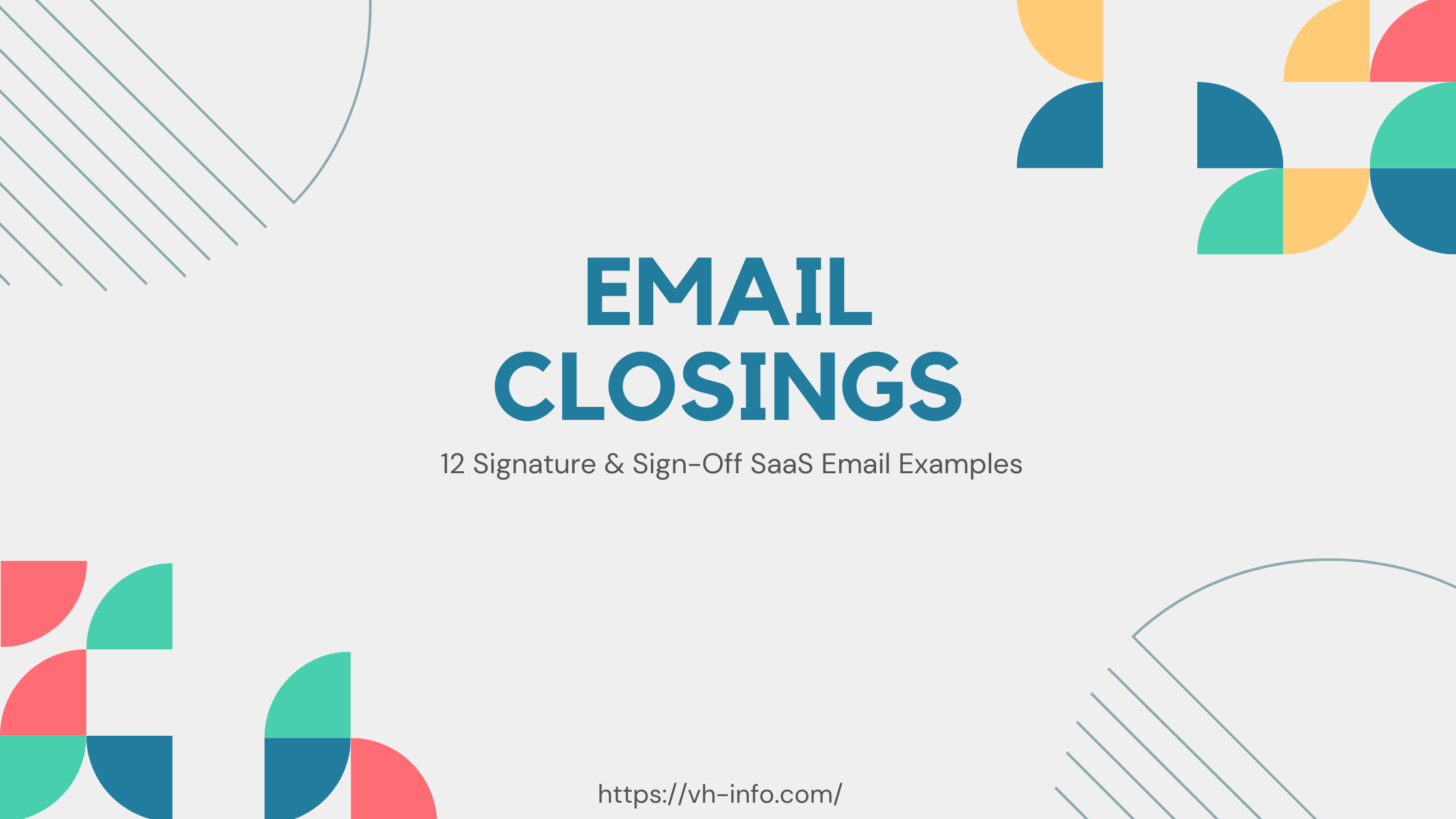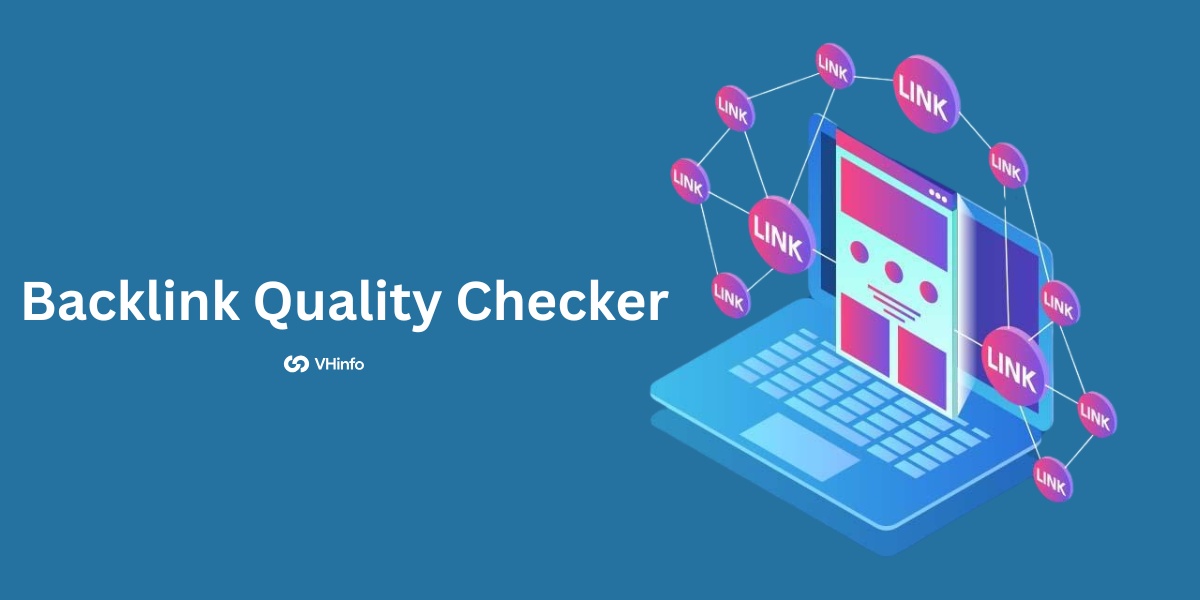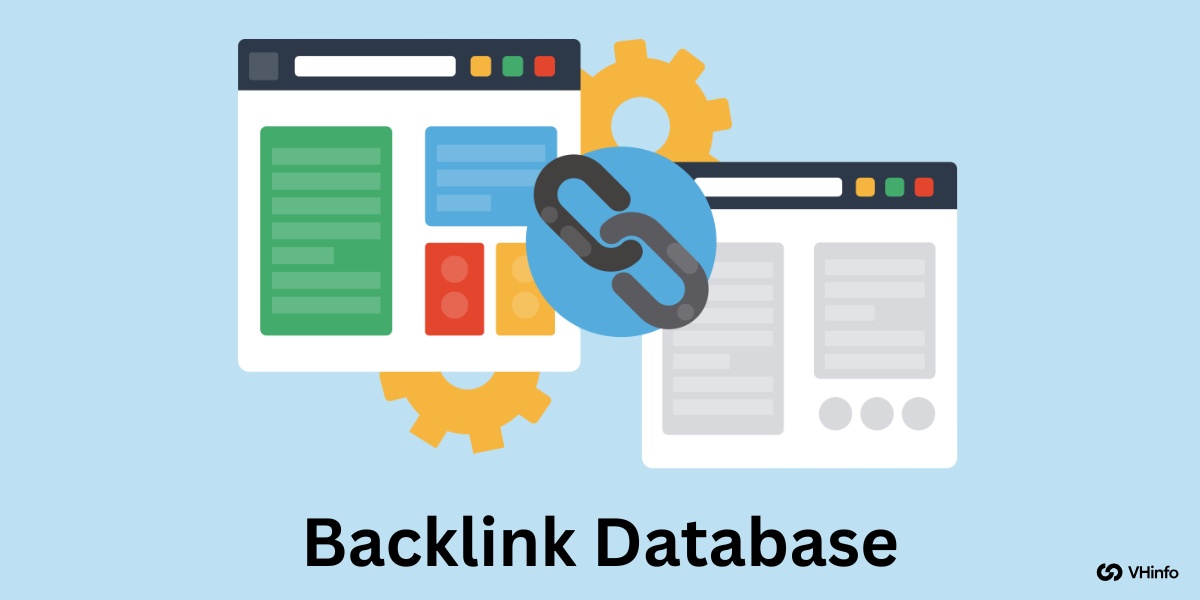Emails play a crucial role in the growth of SaaS businesses—from increasing user engagement and nurturing customers to improving conversions and generating business revenue. While crafting emails, many marketers pay close attention to things like the subject line, hook, and email body. What many don’t think twice about is their email sign-off and signature.
The reason is simple: Email sign-offs and signatures are always at the bottom of the email and people won’t read them anyway.
But that’s not true.
Email sign-offs and signatures greatly influence how people perceive your email. They’re a great way to infuse some emotion and personality into your email, end an email on a good note, and, in some cases, tell recipients what to expect next.
In this article, we’ll explore why email closings matter, some best practices for closing an email, and some real-life examples of SaaS email closings that work.
Why email closings matter for SaaS sales
An email sign-off is a short closing line that you add to the end of your email, just before your email signature. A sign-off can range from a curt “Regards” to a detailed, professional email closing that comprises a job title, email address, social media (or contact) links, and a call-to-action.
While email sign-off and email signature are often used interchangeably, they are different parts of an email, as seen below:

Here are some reasons email closings matter for SaaS businesses:
- Professionalism: As explored in the Attrock email signature generators guide, A well-crafted email closing adds a touch of professionalism to your communication. It shows that you value your subscribers’ time and are serious about the business relationship.
- Great final impression: Your email closing is the last thing the recipient reads and it can leave a lasting impression. A positive and friendly closing can make your email more memorable and increase the likelihood of a positive response (or even a conversion).
- Branding and consistency: Your email closing is an opportunity to reinforce your brand’s voice and tone. Whether your brand is known for being professional, approachable, or innovative, your email closing should reflect these characteristics to maintain a consistent brand image.
- Provide a call-to-action: An effective email closing often includes a clear call-to-action (CTA). This can be a request for a follow-up meeting, a demo, or any other desired next step in the sales process. A well-defined CTA guides the prospect on what to do after they read the email.
- Personalization: Your email closing allows you to add a personal touch to your email. Personalization can include using the prospect’s name, expressing genuine interest in their business needs, and tailoring the closing to the specific context of the conversation.
- Build trust and emotional connection: Trust is crucial in sales, especially in the SaaS industry where clients and customers are often making a significant investment in a long-term solution. A thoughtful and courteous email closing can help build trust, evoke positive emotions, and make the prospect, contributing to a stronger connection between your company and potential customers.
- Follow-up expectations: Your email closing often sets the tone for future interactions. It can convey your eagerness to continue the conversation and set expectations for the next steps. This clarity can help in streamlining the sales process.
SaaS email closing best practices: How to seal the deal
When composing your sales email closing, here are some best practices to keep in mind to increase your chances of success:
- Add a call-to-action: Clearly state what action you want the recipient to take after reading the email. Whether it’s scheduling a call, requesting a demo, or providing more information, make your CTA specific and easy to understand.
- Use a strong closing statement: End your email with a strong and confident closing statement that summarizes the key benefits or value proposition, and reinforces the main points of your email.
- Never skip a closing: No matter how many emails you’ve sent to your recipients or how much of a relationship you’ve forged with them, your emails should always have a closing. This streamlines your communication, affirms your interest in helping your recipient, and builds a lasting positive impression.
- Personalize your closing: Add a personal touch to your email based on your understanding of the prospect and their needs. If applicable, mention specific details from your previous interactions with them to show that you’ve invested time in understanding their business.
- Express gratitude. Thank your prospect for taking the time to engage with you, visit your website, email you, or request a demo. This shows that you value them, which can convince them to patronize your business.
- Reiterate value: If you’re emailing a prospect, reinforce the value proposition of your product or service in your email closing. Remind them of the benefits they stand to gain by choosing your solution and how it addresses their specific pain points.
- Provide contact information: Ensure that your contact information is easily accessible in your email. This includes your email address, phone number, and any other relevant contact details. This makes it easy for prospects to reach out to you with any questions or concerns they may have. You can use the QR code generator to create a QR code that links directly to your contact information, making it even more convenient for recipients to connect with you. To ensure the QR code works properly, consider performing QR code testing before sharing it with your recipients.
- Add a follow-up timeline: If applicable, mention when you’ll follow up or when the prospect can expect to hear from you next. This helps manage the prospect’s expectations and keeps the communication organized.
12 impactful SaaS email closing examples
Now, let’s explore 12 SaaS email closing examples that can positively impact how your recipients react to them. Since email closings like “Best,” “Regards,” “Yours sincerely,” and “Respectfully” are popular, we won’t be covering them. Instead, we’ll be exploring lesser-known email closings that can make all the difference.
Follow-up expectations
In these email closings, businesses set the tone for future correspondence with prospects. With closings like “Until next time” and “Talk to you soon,” recipients know to expect more emails from the business in the future. Here are some real-life examples:
1. “Until next time”
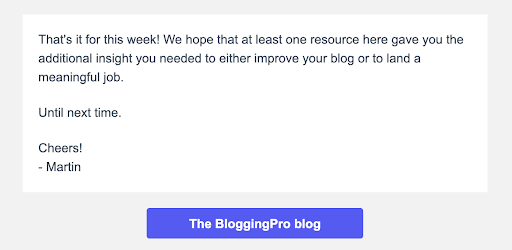
In this email, Martin from BloggingPro used the simple phrase “Until next time” to tell prospects that he’d be sending more emails soon. But he didn’t stop there. Underneath the email sign-off and signature, there’s a link to the BloggingPro’s blog for recipients to explore. This is a clear CTA that tells prospects what to do after reading the email.
2. “Talk again soon”
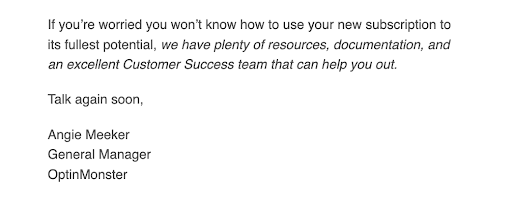
After telling their email subscribers that OptinMonster has many resources they can use to learn how to derive value from the tool, Angie Meeker, General Manager at OptinMonster, closes off the email with “Talk again soon.” This email closing establishes that there’ll be more emails coming from Angie’s desk about the merits of OptinMonster in the near future.
P.S.: All of Angie Meeker’s emails end with “Talk again soon” or “Talk to you soon,” which reinforces the brand’s tone and promotes a consistent brand image.
3. “Till next time!”

In this email closing, Jasmine of Jasmine Williams Media is asking her subscribers for advice on how to become more active on LinkedIn and Instagram. From the tone of the email, you can guess that she has a close relationship with her subscribers and is open to sharing her feelings with them.
That’s why the informal nature of her email sign-off—“‘Til next time! Big (virtual) hugs” and the handwritten email signature—is fitting.
Strong call-to-actions
In these emails, businesses don’t take the regular approach—such as “Best regards” and “Sincerely”—with their emails. Instead, they include clear CTA buttons directing recipients on the action to take when they finish reading the email. Here are some real-life examples:
4. “For any enquiries or concerns”

In this email from the Rise team, they first show interest in the success of their customers. Next, they clearly spell out how recipients can contact them if they have any inquiries or concerns. In addition to the channels through which Rise can be contacted, the team also included the business’s phone numbers for convenience.
5. “Let’s get started”
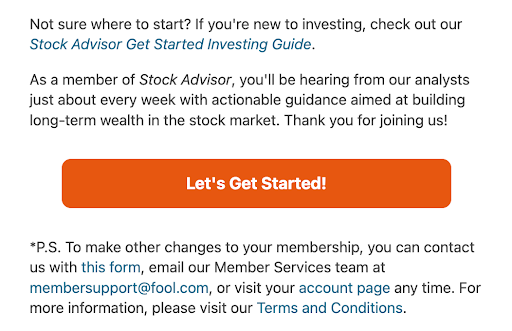
In this email from The Motley Fool, the team put a link to an article where new investors can learn more about buying stocks and funds.
Then they put a more obvious CTA for members of their premium feature, Stock Advisor—whom the email actually targets—and encourage them to start their investing journey with stock recommendations from The Motley Fool’s financial analysts.
6. “Not sure where to start?”

As you might’ve guessed, this Codecademy email is for people who are just signing up for Codecademy’s free trial. The team at Codecademy realized that new subscribers may not know where to start in their programming journey, so they included a CTA button that links to their free quiz to help people gain more clarity into what they should learn.
Positive vibes
Sending lovely wishes and positive vibes is a great way to end your email on a nice note and bring your recipients some happiness. Here are some real-life examples of email closings that spark joy:
7. “All the best”

Starting with an all-encompassing email closing, “All the best” is an excellent way to show that you wish your recipients well. Mark Murphy, the founder of Leadership IQ, uses it in all his content round-up emails to show that he supports his email recipients on their journeys to improve their leadership skills.
8. “Have a great weekend!”

We’re now getting more granular with “Have a great weekend!”—which is a wonderful way to close an email you send on Friday.
In this Friday email, Jonathan Tanner of Social Media College, provides some links that cater to both individuals who use TikTok, social media managers and agencies that manage multiple social media accounts, and business professionals who use LinkedIn. Seeing as people might peruse this content in the days that follow, Jon Tanner wishes them a great and productive weekend.
9. “With love”
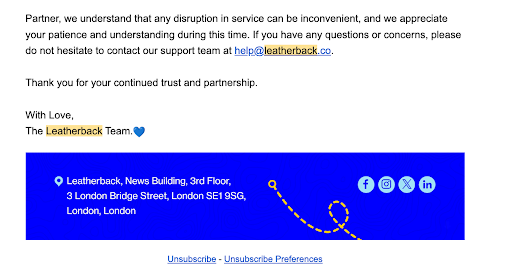
Leatherback, the payment services app, shows how dedicated it is to customer success by having regular system maintenance periods. It sends emails before and after this procedure, all of which end with the nice-to-read phrase, “With love.”
Before that closing, Leatherback expresses the frustration its Partners may feel during maintenance periods and how much the team appreciates their partners’ patience and understanding. Then they go on to provide a way for customers with questions or concerns to contact them. They express further thanks and close with “With love.”
Beneath the email signature, there’s a bright blue banner that shows Leatherback’s physical address as well as the social media platforms through which their customer success team can be reached.
Custom email closings
Sometimes, SaaS companies deviate from the normal email closings, and instead, tailor their email closings to match the topic of the email copy. Here are some examples of custom email closings in action:
10. “To seizing every opportunity”

In this email, Michael Douglass of The Motley Fool is informing subscribers that the limited offer to upgrade their account is expiring soon. Douglass explains the benefits of this offer and urges recipients to upgrade before it’s too late. That’s why the closing, “To seizing every opportunity” is fitting. It spurs people to take advantage of the limited offer before it’s no longer available.
11. “Happy writing”

In this email, David of ServiceScape is urging recipients to check out ServiceScape’s newest blog post which provides tips and insights into crafting a fantasy tale that entertains and inspires readers. David explains the topics the blog post covers including (sub)genres, designing fantasy settings, crafting fantasy characters, and integrating conflicts and tensions.
At the end of the email, David writes “Happy writing,” which is fitting because the email is promoting a resource that teaches recipients how to write fantasy. Below the email signature is ServiceScape’s mailing address for people who’d like to send something, like a manuscript.
12. “May the opens be with you”
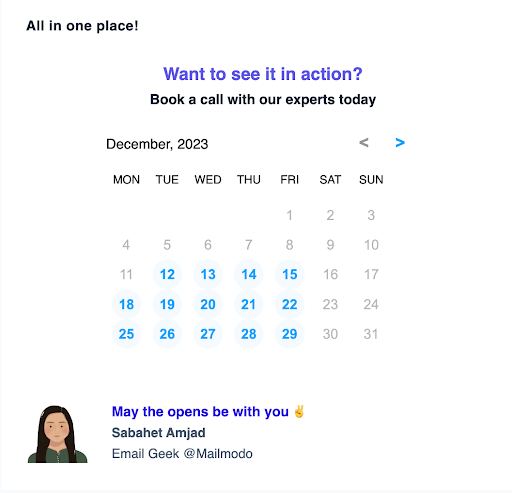
Elevate the effectiveness of your emails with the right email sign-offs
Whether it’s a welcome email, a blog post round-up email, or a limited offer email, the right closing can help you leave a great last impression on your recipient and motivate them to take your desired action—be it checking out your website, requesting a free demo, or upgrading their payment plan.
If you’re a SaaS company looking to increase your website’s visibility in search engines through link building, check out VH-info. VH-info is a premium link-building agency that specializes in obtaining high-quality links for SaaS companies across various industries. The expert team at VH-info creates a customized link-building strategy for each company and targets top-quality websites that are relevant to the company’s niche to earn high authority backlinks for their client.
Reminiscent of the popular axiom in the Star Wars universe, “May the opens be with you” is a suitable closing because it comes from an email marketing service, Mailmodo. In this email, Sabahet Amjad from Mailmodo unveils the tool’s creation features, which comprise a drag-and-drop editor, pre-built email templates, interactive widgets, and online forms.
Below a fast-moving GIF of these features is a calendar through which Sabahet encourages recipients to book a call with Mailmodo’s experts to see these features in action. And because one of the goals of a email marketing team is to get higher open rates on their emails, Sabahet closes with “May the opens be with you”—a tailored wish of goodwill to Mailmodo’s customers.
Bernard Aguila
Writer Information
Bernard Aguila is a brand ambassador and SEO Outreach Specialist at Omniscient Digital, a premium content marketing & SEO agency.
